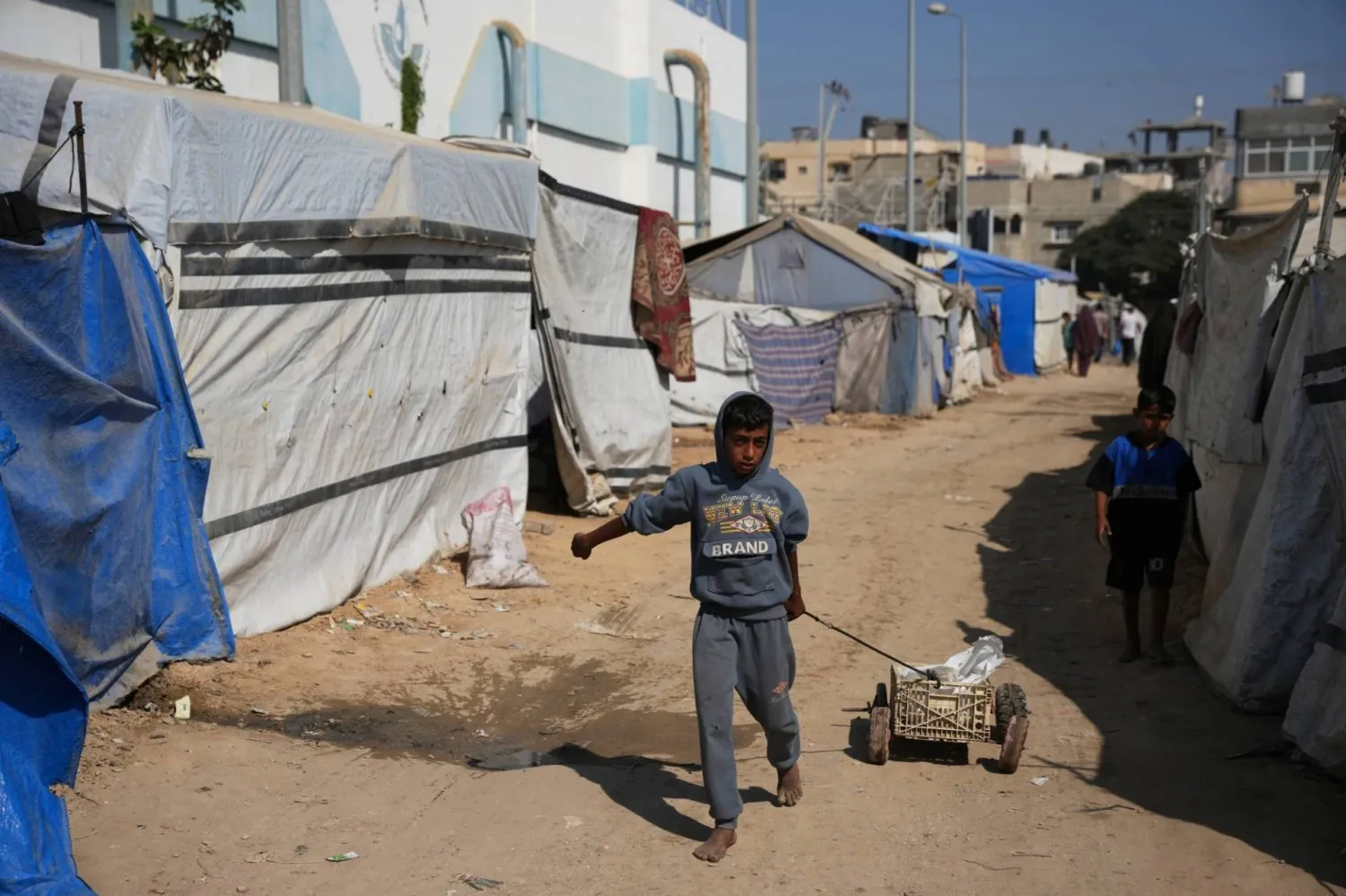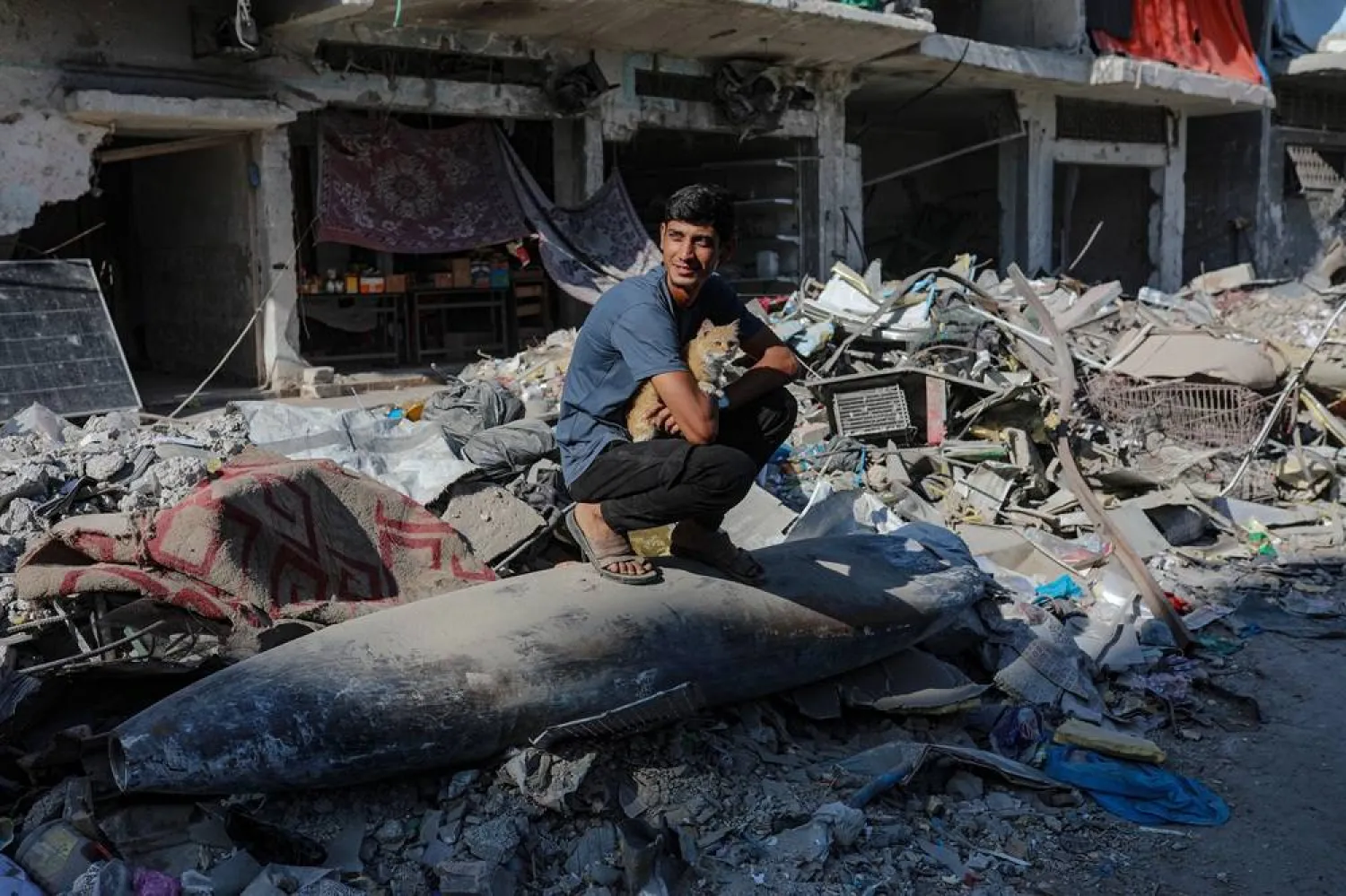Campus protests by pro-Palestinian activists spread across Europe on Tuesday as some called for a break in academic ties with Israel over the war in Gaza, while schools increasingly faced the question under debate in the US: Allow or intervene?
German police broke up a protest by several hundred pro-Palestinian activists who had occupied a courtyard at Berlin’s Free University. Protesters occupied a university building in Amsterdam hours after police detained 169 people at a different campus location. Two remained in custody on suspicion of committing public violence.
Elsewhere in Europe, some student camps have been allowed to stay in places like the lawns of Cambridge. In recent days, students have held protests or set up encampments in Finland, Denmark, Italy, Spain, France and Britain.
In Berlin, protesters put up about 20 tents and formed a human chain around them. Most covered their faces with medical masks and draped keffiyeh scarves around their heads, shouting slogans such as “Viva, viva Palestina.”
Organizers said the protests were made up of students from various Berlin universities and other individuals.
Police were seen carrying some people away and using pepper spray as scuffles erupted between officers and protesters. The school's administrators said in a statement they had called the police after protesters had rejected any kind of dialogue and some had attempted to occupy lecture halls.
“An occupation is not acceptable on the FU Berlin campus,” university president Guenter Ziegler said. “We are available for academic dialogue — but not in this way.”
Berlin Mayor Kai Wegner hailed the school's decision to call police before things escalated.
In the eastern German city of Leipzig, about 50 pro-Palestinian protesters set up tents at Leipzig University and occupied a lecture hall, the dpa news agency reported. It said the main student association in the state of Saxony, where Leipzig is located, called on the university to break up the occupation over concerns about the safety of Jewish and Israeli students.
In the Netherlands, police broke up a pro-Palestinian demonstration camp at the University of Amsterdam, beating some of the protesters and pulling down tents. Police said on the social media platform X that the action was “necessary to restore order” after protests turned violent.
Police used a mechanical digger to push aside barricades and officers with batons and shields moved in. Protesters had formed barricades from wooden pallets and bicycles, national broadcaster NOS reported.
A crowd that swelled to some 3,000 demonstrators, including students and staff, some wearing keffiyeh scarves, gathered near the location of the dismantled camp, chanting slogans including, “Palestine will be free!” and “Cops off campus!”
Jamil Fiorino-Habib, a lecturer at the university’s media studies department, told the gathering that “the only path forward is a total academic boycott of Israel.”
In a statement, the University of Amsterdam said: “We share the anger and bewilderment over the war, and we understand that there are protests over it. We stress that within the university, dialogue about it is the only answer."
In the early evening, a group of protesting students occupied a building on another campus of the school in the historic heart of Amsterdam, an AP video journalist at the scene said.

In Austria, protesters camped out in about 20 tents in the main courtyard of the University of Vienna for a second day. As police watched, protesters cordoned off the encampment, which is near a memorial for Austrian Jews who died in the Holocaust.
The University of Vienna and the main Austrian Union of Students distanced themselves from the protest. The union said “antisemitic groups were among the protest's organizers,” which the protesters denied.
Pro-Palestine protest camps have sprung up at about a dozen universities in Britain, including at Oxford and Cambridge, urging the institutions to fully disclose investments, cut academic ties with Israel and divest from businesses linked to the country.
“Oxbridge’s profits cannot continue to climb at the expense of Palestinian lives, and their reputations must no longer be built on the whitewashing of Israeli crimes,” said a joint statement from protesters at the two universities.
Over 200 Oxford academics signed an open letter supporting the protests.
In Finland, dozens of protesters from the Students for Palestine solidarity group set up camp outside the main building at the University of Helsinki, saying they would stay there until the university, Finland’s largest academic institution, cuts academic ties with Israeli universities.
In Denmark, students set up a pro-Palestinian encampment at the University of Copenhagen. The university said students can protest but called on them to respect the rules on campus grounds.
In Italy, students at the University of Bologna, one of the world’s oldest universities, set up a tent encampment over the weekend to demand an end to the war in Gaza. Groups of students organized similar and largely peaceful protests in Rome and Naples.
In Spain, dozens of students have spent over a week at a pro-Palestinian encampment on the University of Valencia campus. Similar camps were set up Monday at the University of Barcelona and the University of the Basque Country. A group representing students at Madrid’s public universities announced it would step up protests in the coming days.
In Paris, student groups called for gatherings in solidarity with Palestinians later Tuesday. Students at the Paris Institute of Political Studies, known as Sciences Po, were seen entering the campus to take exams as police stood at entrances.









